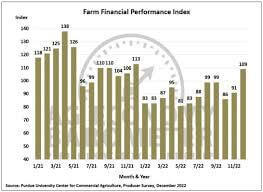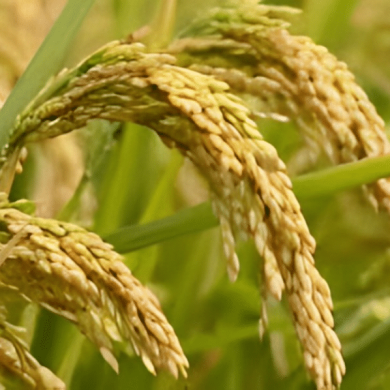Unlocking the Power of Farm Financial Statistics
Unlocking the Power of Farm Financial Statistics
This blog post will explore Unlocking the Power of Farm Financial Statistics, an essential tool for tracking and analyzing the profitability of a farm. We will examine the various types of financial statistics, how they can be used to evaluate the success of a farm, and strategies to maximize farm financial success. Additionally, we will discuss the importance of setting clear financial goals and objectives, and how financial planning can be used to achieve these objectives. Finally, we will discuss ways to leverage financial statistics to make better decisions.

Introducing Farm Financial Statistics and Farm Financial Management
Paragraph Farmers and ranchers are constantly in need of data to help them make informed decisions about their operations Introducing Farm Financial Statistics can provide agricultural producers with valuable insights into profitability, credit risk, and other metrics necessary to optimize their farm businesses Such information can assist farmers in making better budgetary decisions and give them greater control over their financial well-being. Paragraph: Agricultural economic data is critical for gauging economic trends on an industry level, as it provides a snapshot of performance both past and present This can be extremely beneficial when deciding crop production strategies or analyzing governmental policy impacts on the market, such as tariffs or subsidies being applied to certain commodities Additionally, this type of data is essential for investors looking at potential agribusinesses who wish to have a comprehensive understanding of sectoral conditions. Paragraph Crop Financial Statistics enables farmers to compare yield averages across regions allowing them to set realistic expectations for harvest numbers based on environmental factors such as weather variations prior seasons have experienced; furthermore, these records allow farmers one method of assessing cost-to-yield ratios year upon year in order to ensure optimal productivity and efficiency from specific crops they grow. Paragraph Livestock Financial Records empower producers with access to financials associated with their herds – enabling insight into expenses related to feed costs, veterinary visits, and fees associated with facilities upkeep – that greatly shape the success of livestock operations Furthermore by including death loss average reported years -‐ wise owners gain another layer resourcefulness when determining whether investments made current animals worth continuation next season. Paragraph Agribusiness Financial Analysis offers benchmarking capability between enterprises within the same geographical area; strategic collaborations often share strong synergies occurrences amongst variables like climate, soil structure, etc which ‐ combined competitive advantages -‐ vital component setting the farming business apart rest time sustainability comes play Finally Agricultural Credit Reports become integral aspect operation planning & managing debts; tracking ability payback history lenders banks invaluable tool ensuring operational longevity & security future endeavors alike.
Evaluating Farm Profitability Using Financial Statistics With farm financial analysis
Agricultural Economic Data When evaluating farm profitability, financial statistics are essential for a comprehensive assessment A wide variety of economic data points can help farmers correctly identify potential areas for improvement and assess current business practices This includes analyzing key agricultural crops, livestock production records, agribusiness financial analysis reports, and other ag-related credit reporting services Access to reliable Agricultural Economical Data will provide the necessary information needed to make accurate decisions regarding farm efficiency and profitability. Crop Financial Statistics When looking at crop performance in regard to profitability it is important to access accurate crop financial statistics that reflect their current value in relation to harvest cycles, land use/management strategies, etc By utilizing this type of data farmers can take actionable steps towards improving not only quality yield but also overall profit margins as well Crop financial statistical data should be updated regularly allowing the farmer or agricultural specialist easy access when making critical decisions on behalf of their organization. Livestock Financial Records The analysis of livestock performance is an important factor when assessing farm profitability over time Utilizing Livestock Financial Records such as animal management behaviors (feed intake, health conditions, genetic trends among various species within herds or flocks (cost-related benefits as well as projected values according to industry standards allows those interested in farming operations a more clear picture into what works best economically for them while still maintaining ethical best practices when working with live animals and associated products/markets/niches. Agribusiness Financial Analysis Reports Agribusiness or Agriculture Businesses may choose to engage professional firms who like agricultural specialists generate detailed reports based on evaluation metrics gathered from surveys, interviews, focus groups, etc These Professional Firms analyze the current state or predicted future growth patterns from both local & global market perspectives providing invaluable insights into strategic planning tactics when engaging in either short term tactical maneuvers or long-range objectives involving investments and operational scalability initiatives related directly to firm efficiency & improved business profits via optimized resource allocation models garnered by investors studying past & present developments common amongst corporate rivals attempting similar goals through various means across different industries(Referring back rd paragraph point about referencing industry standards. Agricultural Credit Reports As previously mentioned having up-to-date credit information available within this particular niche sector provides even further insight into organic vs paid advertising levers being pulled on a daily basis while concurrently managing risk factors involved with uncertainty surrounding high volatility markets such as foreign exchange rates plays major role if trading goods internationally which therefore requires more frequent monitoring than domestic trade negotiations Knowing these details helps stakeholders better advise clients who lack expertise behind the scenes adjusting variables accordingly strengthening bottom line figures upon completion most notably equity related return ratios just example indicating true ROI seems reasonable thus bolstering results driven consultations creating win-win scenarios leading successful outcome’s consultative consulting engagements meeting all expectations every round ultimately creating sustainable partnerships throughout Farming Profitability Data ecosystem mutually beneficial relationship continues result maximum revenues achieved yielding highest profits everyone enjoys lakeside view during sunset.
Setting Clear farm financial data Goals and Objectives
Paragraph This comprehensive guide takes a detailed look at setting clear financial goals and objectives while also exploring the relevant agricultural data Learn about crop and livestock financial records, agribusiness economic analysis, agricultural credit reports, and farming profitability records to inform goal-setting decisions. Paragraph Charting out your farm’s financial strategy requires careful consideration of many factors – such as income from crops or animals raised on the land, expenses associated with production activities like fertilizer or feed costs, additional management fees associated with maintaining quality control over operations — and more Having access to reliable data is key for creating a successful plan! Paragraph Obtaining accurate agronomic information is an important first step when it comes to achieving your financial goals in agriculture – this includes understanding the concept of yield forecasting as well as having knowledge of farming activities that could affect yields including weather conditions or pest outbreaks Additionally, staying up-to-date on crop prices can help you make smarter buying decisions! Paragraph Furthermore, accessing statistics related to the cost of production practices (including labor costs, the technology used in farms today (ie, GPS systems, livestock health & biosecurity measures taken by other farms all play roles in helping determine how much money will needed to be allocated towards certain areas of production activity And finally knowing what types of loans are available for farmers so they don’t find themselves overextending their budget can be just as helpful too! Paragraph All this valuable insight can be found by looking into resources such as agricultural economic data sources which provide specific information regarding current market trends along with historical values for comparison purposes; crop & animal report summaries summarizing harvesting yields; agriscience research which offers impactful advice backed by science; livestock financial records highlighting different stages within the lifecycle; agribusiness financial analysis showing potential profits/losses based upon various inputs; & credit reports that compare debt ratios across peers, state/national averages, etc To build a successful plan use these resources together with sound decision making inspired by clear cut objectives set through deep thoughtfulness & foresight in order reap maximum benefits/rewards from your hard work!
Using Financial Planning to Meet Objectives
Paragraph Financial planning is essential to the success of any agricultural operation, as it helps identify and achieve objectives while allowing for an accurate assessment of profitability It’s important to understand which financial data sets are necessary in order to properly plan for success This includes understanding agricultural economical data such as crop financial statistics, livestock financial records, agribusiness financial analysis, agricultural credit reports, and farming profitability data. Paragraph Crop financial statistics provide insight into developing trends within different growing markets so that farmers can better prepare their operations for success This type of information helps inform decisions about when and where to allocate resources for crops or how much capital may be needed in order to purchase new equipment or expand acreage In addition, crop data can also help reduce risks by showing areas with higher yields or lower costs that will result in a greater return on investment. Paragraph Livestock financial records track the cost associated with maintaining healthy herds alongside income produced from animal products such as meat or dairy products Having access to this type of information allows agricultural producers the ability to accurately predict future expenses while also setting long-term goals related to additional premise investments like land acquisition or feed storage facilities expansion projects Additionally analyzing these figures offers insight into which breeds produce more efficiently than others so strategic changes can be made before potential losses occur due too inefficient breeding cycles or market competition increases prices further down the line. Paragraph Agribusinesses need detailed economic activity analysis in order to remain competitive within their respective industries but at the same time remain profitable given fluctuations in grain pricing and other production-related factors beyond their control These analyses offer valuable insights into possible growth opportunities via both natural expansions and outside acquisitions that would enable total output increases without additional costs considerations being weighed against potential profits generated when employing certain strategies over others The right decision could mean thousands saved annually versus tens of thousands spent if not prepared correctly beforehand through utilizing current locality specific price aggregates alongside calculated projections reflecting expected market conditions moving forward during peak season. Paragraph Agricultural credit report records key information relating to the loans available lines available for existing borrowers & trustees, as well as make-up response times associated with debt liability acceptance rates all leading back to core competencies required structuring financing solutions still maintain equity positions intact despite leveraging hefty percentages Obtaining this info early give operators edge financially speaking giving them opportunity weigh benefits offered multitude debts various lenders able successfully payout amounts due timely manner without putting strain upon regular cash flow operating function fully operational year-round capacity adequately handle demand placed upon business model each fiscal quarter.
Leveraging Financial Statistics for Better Decisions
Paragraph one Millions of people worldwide are involved in the agricultural industry and generate billions of dollars in annual revenue As such, it is important to use data to leverage financial statistics for better decisions In this comprehensive guide, we will discuss different sources of agricultural economic data including crop financial statistics, livestock financial records, agribusinesses’ financial analysis, Agricultural credit reports and farming profitability data. Paragraph two Crop Financial Statistics provides an overview of how different crops affect the economy by providing information related to crop production costs such as seed costs, fertilizer prices, and water availability This type of information can be used to make more informed decisions when deciding what crops should be planted or harvested each year based on market demands or the cost efficiency associated with certain varieties This also allows farmers to plan ahead for future seasons and get a better understanding of their business’s long-term prospects. Paragraph three Livestock Financial Records includes detailed accounts regarding animal health care expenses like feed inputs or veterinary bills along with sales records that indicate which animals are generating the most profit – all valuable pieces of information when considering strategies for optimizing herd management techniques and increasing overall revenues from animal products like milk production or meat markets By analyzing specific metrics regarding livestock performance over time using various statistical methods changes can be made where necessary in order increase profits while minimizing losses within these investments – especially if culling is needed due change external economic factors that affect a farm’s bottom line (i.e, an outbreak). Paragraph four Agribusiness Financial Analysis seeks out where possible operational improvements can be made after evaluating multiple cash flow statements whether it pertains directly to marketing food items at wholesale rates versus retail prices or indirect savings through improved bargaining power via exclusive brokerage fees among other considerations etc… Ultimately seeking answers as too how much money must obtain either through external investors loaned funds available resources from government subsidies etc…to sustain viable operations under current economic conditions? Regularly assessing these figures across all aspects is essential in making sure all sectors continue producing positively on a consistent basis so that bridge loans secured against last season’s profits don’t become completely unsustainable obligations without restructuring options being leveraged whenever applicable. Paragraph Five agricultural Credit Reports provides access to detailed descriptions concerning various businesses’ borrowing histories determining who regularly pays back debt owed in full & what terms have been pre-approved upon successful credit application reviews potentially shedding light onto any possible impediments preventing higher rating scores that could hinder potential lenders interest going forward despite strong farming fundamentals reflected throughout carefully evaluated past performance evaluations applied towards internal/external audit procedures inherently feeding into stronger algorithms governing respective strategically calculated borrower indexes highlighting regionally dynamic risk categorizations accordingly helping target lucrative partnerships advantageous enough worth taking chances upon if managed correctly otherwise resulting overseas export opportunities benefiting both parties equally.
Crop Financial Statistics
Paragraph This comprehensive guide will dive into the world of agricultural economic data, helping you to understand crop financial statistics and livestock financial records We’ll look at agribusiness financial analysis from a variety of perspectives and explore agricultural credit reports for farming profitability data that can be used to make informed decisions about your business. Paragraph In this guide, you’ll learn all about crop financial statistics which are based on the yield from each acre planted in any given season and the resulting profits or losses due to market fluctuations You’ll also become familiar with analyzing different types of financial records including feed costs, medical expenses, labor costs and sales revenue. Paragraph Agribusinesses that operate across various industries such as food production, animal husbandry, mechanization services, or other related enterprises need reliable financial analysis when tackling complex management issues Customized reports generated using agricultural reports can provide key insights into farming profitability data enabling businesses to scale up operations while considering risk factors accurately. Paragraph Farming profitability data includes detailed information concerning cost savings achieved through better utilization of resources along with estimates for future yields per acreage area in order to determine whether investments made have paid off or not It is essential for farmers who want an organized approach towards assessing their performance over a specified period of time so they can identify areas needing improvement and take corrective measures accordingly. Paragraph Whether you own only a few acres or manage thousands throughout multiple countries around the world it is important to maintain accurate financial statistics linked together with financial records as part of daily operations monitoring efforts if sustainable growth has to be ensured within limited budgets while still turning measurable profits on every sale transaction conducted expertly by personnel hired under your guidance.
Unlocking the power of farm financial statistics
Unlocking the power of farm financial statisticshas never been easier With the various types of agricultural economic data, crop financial statistics, livestock financial records, agribusiness financial analysis, agricultural credit reports, and farming profitability data discussed in this blog post, it is clear that there is much knowledge that can be gained about farm finances and their potential impacts on farmers’ businesses A successful agribusiness needs to have a thorough understanding of all these facets in order to optimize operations for profit and success We hope that this blog post has provided you with valuable information to support your business goals.





Add comment
You must be logged in to post a comment.